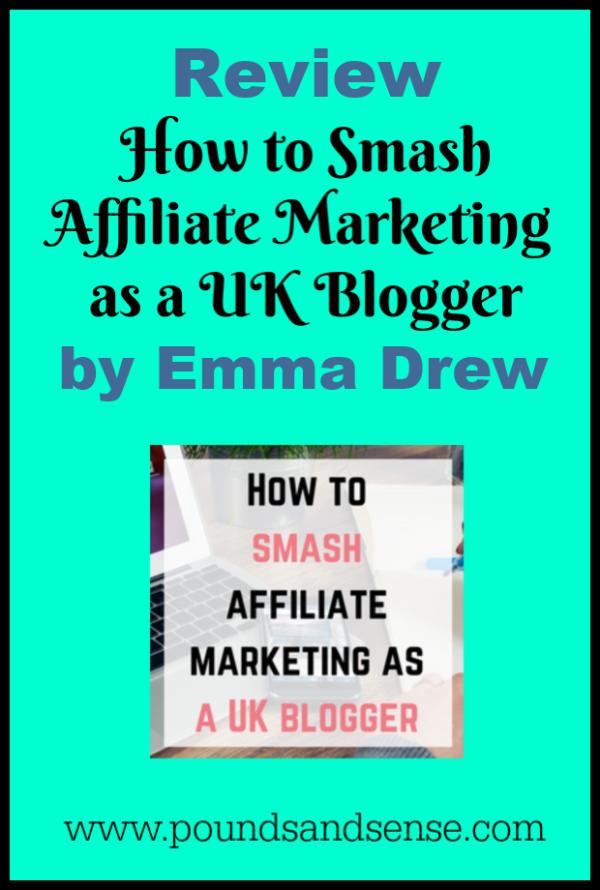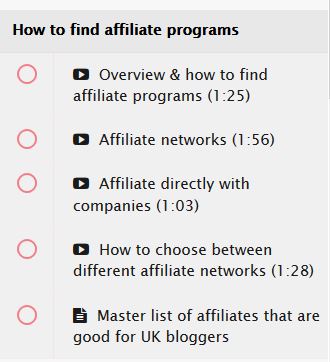Twenty Great Ways to Make Extra Money From Home
Updated 25 May 2023.
Although the pandemic is now largely behind us, many of us are seeing bills rise as a consequence of lockdowns and other government measures, world-wide supply chain issues, gas/electricity and petrol price rises, the war in Ukraine, and so forth.
So today I thought I would set out some ways you may be able to make a few pounds extra to help defray the rising cost of living. None of these is likely to make you a fortune, but together they can certainly help keep your bank balance ticking over.
I have linked to relevant posts on Pounds and Sense for further information where appropriate. I have direct experience of all the methods set out below and therefore know that they work and are not scams.
1. Prolific Academic
Prolific Academic is a platform used by academic researchers world-wide to recruit participants for online studies/surveys. These are varied and often surprisingly interesting. They require anything from two minutes to an hour to complete, with payments based on how long (on average) they take. I’ve earned almost £400 to date from Prolific. For more information, see my blog post Make Money and Help Academic Researchers With Prolific Academic.
2. MobileXpression
If you have a smartphone, this is an easy way to make money from it. Just install this app (which tracks your browsing anonymously) and every few weeks you will receive a £20 Amazon voucher for your trouble (Amazon vouchers are pretty much as good as money, as you can of course buy almost anything there). You can read my full review of the MobileXpression app in this post.
3. Shop and Scan
Shop and Scan is a market research programme run by Kantar Worldpanel. Anyone can apply to become a panelist, and when you are accepted (which may be immediate or after a few weeks) you receive a barcode scanner and guidebook in the post. You are then required to scan all your shopping when you bring it home (or it’s delivered) and scan and submit your receipts..For doing this you get points. When you have enough, these can be converted into vouchers for a wide range of online stores (again, I normally pick Amazon). You can earn extra points by performing other tasks such as completing online questionnaires, so it doesn’t take long to earn enough points for a £10 voucher. For more information, see my blog post Make Money From Your Shopping With ShopandScan.
4. The Viewers
The Viewers is another market research company always looking for new members for its (paid) audience panel. As the name suggests, they research people’s TV viewing habits via surveys and focus groups. They pay participants in cash (via PayPal) or Amazon vouchers. They run ‘real world’ focus groups in large cities, and online studies of various types. For more information, see my blog post Make Money Watching TV With The Viewers.
5. People for Research
This is another opportunity to make money taking part in consumer research. People for Research are constantly recruiting people to take part in studies. Some of these take place in large cities (London and Bristol especially) but many are done remotely via the phone or the internet. The studies cover a huge range of topics and are for the most part interesting and enjoyable. But the best thing is that they are fairly (and sometimes generously) recompensed – usually in cash, though sometimes Amazon vouchers. For more information, see my blog post Earn a Sideline Income with People for Research.
6. Populus Live
Populus Live is a survey website that wants your opinions and pays cash for them. You can sign up free of charge and will then receive email notifications any time they have a survey you may be eligible for. Each survey is worth a set number of points. Once you have accrued 50 points you will be paid £50 (each point is worth £1, in other words). Admittedly it can take a little while to reach the payment threshold, but £50 is undoubtedly a useful sum to have when you receive it. For more information, see my blog post Make Extra Money From Populus Live.
7. Selling on eBay
One great way to generate some extra cash is to have a clear-out of things you no longer need and put them up for sale on eBay. All sorts of things sell here, and if you have never tried selling via the site you will be pleasantly surprised by how easy it is. What’s more, as long as you are selling your own possessions (and not buying stuff to resell) it’s tax-free too. For more tips about this, see Twelve Top Tips for Selling on eBay, a guest post on PAS by my money blogging colleague Luci Olivia.
8. Matched Betting
In the last year or two matched betting has undoubtedly become harder, partly due to the pandemic and partly to bookmakers becoming less generous with their offers. If you haven’t yet tried matched betting, though, there is still money to be made.
For those who don’t know, matched betting involves taking advantage of online bookmaker offers (especially welcome offers) to generate a guaranteed profit. It is emphatically not the same as gambling (which I don’t recommend at all). As per my blog post Can You Make Money from Matched Betting? if you are new to this field I recommend starting with the matched betting support and advisory service Outplayed [referral link] previously called Profit Accumulator. You can earn up to £45 (tax free) by taking advantage of the offers available to free members. You could then leave it at that or sign up as a full member with unlimited profit potential.
9. Trading 212
This online share trading platform is offering anyone who signs up and deposits a minimum of £1 a free share. This is chosen at random but could be worth up to £100. You can sell this after three days if you wish and withdraw the proceeds (including your initial deposit) after 30 days. I got a share in Ford Motor Company which was worth about £8. Obviously this wasn’t as exciting as I might have hoped, but it was still – in effect – free money for almost no time or effort. And, who knows, the value of my share could skyrocket in future if the ‘internal combustion engine’ really catches on 😉 For more information on Trading 212, including how to get your free share, see my blog post Get a Free Share Worth Up to £100 With Trading 212. Note that the current free share offer closes on 8 June 2023.
- You can also get a free ETF share worth up to £200 by signing up with DIY wealth-buiilding app Wealthyhood!
10. Selling Your Old Tech
Most of us have old gadgets we no longer use that are just gathering dust. They include mobile phones, tablets, laptops, cameras, games consoles, and even desktop computers. They may still work, but we have replaced them with new and (hopefully) better products. If that sounds like you, there are lots of ways you can make money from your old tech, even if (in many cases) it doesn’t work any more. Check out my blog post How to Make Money From Your Old Tech for a range of methods for doing this.
11. Freelance Writing
This is a subject close to my heart, as for many years I was a full-time freelance writer (I’m semi-retired now). It’s a competitive field, but there is still lots of money to be made. You don’t need to be Shakespeare either, just have a reasonable grasp of written English and be willing and able to write what the market wants. Check out my blog post My Top Ten Tips for Making Money as a Freelance Writer here. You can also read my posts Should You Write a Book? and How to Publish Your Own E-book on Kindle.
12. Cashback Websites
I’ve mentioned cashback sites a few times on PAS. These are sites such as Top Cashback and Quidco, where any time you make a purchase with a certain online store, if you go via the cashback site, you get some money refunded to your account. Obviously you aren’t actually making money in this case – but if you were going to make the purchase anyway you get some money back, and over time this can add up to a tidy sum. In addition, there are some offers listed on the sites where you can get ‘cashback’ without actually making a purchase. For more information, see my blog posts Save Money With Cashback Sites and Six Ways to Make Money With Cashback Sites. You may also like to check out my recent posts about Cashback Angel, a cashback site comparison service, and My Money Pocket, a new and upcoming cashback site.
13. Comping
Okay, comping, or entering consumer competitions, isn’t a guaranteed way of making a sideline income. Nonetheless, there are stacks of cash and prizes on offer at any time, and somebody has to win them. There’s no reason it couldn’t be you! There are lots that you can enter online – just check out competition listing website Loquax, for example. For hints and tips on getting started, see How to Win Cash and Prizes in Consumer Competitions, a guest post on PAS by Cora Harrison. I also highly recommend the book Superlucky Secrets by my UK blogging colleague Di Coke (also known as Superlucky Di). You can read my review of this in-depth guide to comping here.
14. Free Online Lotteries
This is obviously another opportunity where returns are not guaranteed. Nonetheless, there are various online lotteries you can enter free with a chance of winning (in most cases) cash prizes. Typically you have to return to the lottery site every day to see if you are a winner. My favourite such site is Pick My Postcode [referral link]. This site offers multiple chances to win every day, with prizes ranging from £10 to over £1,000. I have a particular soft spot for PMP, as back in the days when it was called Free Postcode Lottery, I was lucky enough to win £614.53 on it. You can learn more in my blog post titled How to Cash in on Free Lottery Websites.
15. Website Testing
If you enjoy trying new apps and websites and putting them through their paces, there are various sites that will pay you for doing this and reporting back. One I wrote about a while ago is What Users Do. Another, newer website testing site with a strong community angle is Crowdville. For more information about this, see my blog post Make Money Testing Apps and Websites with Crowdville.
16. Blogging
I make money this way, and there’s no reason you couldn’t as well. Blogging is by no means a get-rich-quick opportunity. But if you are prepared to put some time and effort in, the rewards will come. You can blog about any subject you like (though some subjects are easier to make money from than others). Once your blog is up and running you can earn from it in various ways, including advertising, affiliate marketing, sponsored posts, and so on. To get an idea how this works, check out this guest post by Ruth Hinds titled Five Things You Really Need to Know About How to Make Money from Blogging. In addition, my UK blogging colleague Emma Drew has an excellent course about making money from blogging called Turn Your Dreams Into Money, which i reviewed here.
17. Online Design and Print
This is a great home-based sideline earning opportunity. No special skills are needed beyond a little imagination; although if you do have art and design skills, so much the better. I’m talking here about designing and selling clothes and other products, from tee-shirts to tote bags, hoodies to coffee mugs. By designing I mean coming up with slogans and/or graphics to adorn these products that will appeal to a particular target market. This opportunity has been opened up by web-based companies such as TeeMill that allow you to design and sell your products online. They provide all the back-end services, including taking payments and fulfilling orders. They charge you a set fee for this, which is covered from the fee paid by your customer. You charge your customers a bit more, and your profit is (of course) the difference between the two. For more information, see my blog post How to Make Money with Online Design and Print.
18. Virtual Assistant Work
There is a steady demand for virtual assistants who can perform a wide variety of tasks from home via the internet. The sorts of things VAs do may include research, writing, proofreading and editing, graphic design, publicity, data entry, programming and other technical tasks, and much more. Social media management is another very popular area. You can read my in-depth blog post on how to make money as a virtual assistant here.
19. Fiverr.com
As you may know, Fiverr is US-based site that lets anyone advertise ‘gigs’ they are willing to perform for five dollars (hence the name, of course). Gigs range from the serious (e.g. write a press release) to the creative (e.g. write a customized solo piano track) to the downright quirky (e.g. write a message, name or URL in chocolate). Most gigs are services delivered electronically, though there is nothing to stop you selling physical products if you wish (you can charge extra for postage). Obviously $5 isn’t a lot, but if you can perform your gig in just a few minutes it can still work out as a decent hourly rate. It’s also possible to charge additional amounts for ‘extras’ such as rapid delivery or upgraded features. See my blog post How to Make Money on Fiverr for much more information about this.
20. Investing for Income
This is obviously a different take from the preceding ideas. If you have money in the bank earning a derisory rate of interest (or nothing at all), however, you might like to consider investing some to provide an additional income stream for you.
This is obviously a huge subject and I can’t go into detail about it here. There are lots of possibilities, though. One would be to invest some of your money in dividend-paying shares. This subject was covered in an excellent guest post for my blog by Lewys Lew titled How to invest For Income From High Yield Share Dividends.
Of course, you should research any possible investment carefully and be prepared to lose money in the short term at least (see below). Note also that some companies – e.g. the big banks and oil companies – cut their dividends during the Covid crisis, so it’s important to pick your sectors carefully.
- Regular readers will know I am also a big fan of the robo-adviser investment platform Nutmeg. They are primarily aimed at helping people build a savings (or pensions) pot rather than providing an income, but you can of course withdraw money from your account as and when you wish. You can read my full review of Nutmeg here.
Of course, all investment carries a risk of loss, so you should always do your own ‘due diligence’ and take advice if in any doubt before deciding to invest. You should also ensure you have enough cash and/or easily accessible savings to get you through a period of three to six months in case of emergencies.
As always, if you have any comments or questions about this post, please do leave them below. And keep reading Pounds and Sense for more money-saving and money-making ideas in the weeks and months ahead.
Disclosure: Some of the links in this post (and elsewhere on PAS) include my referral links. That means if you click through and make a purchase (or perform some other defined action) I may receive a commission for introducing you. This will not affect the price you pay or the products/services you are offered.












